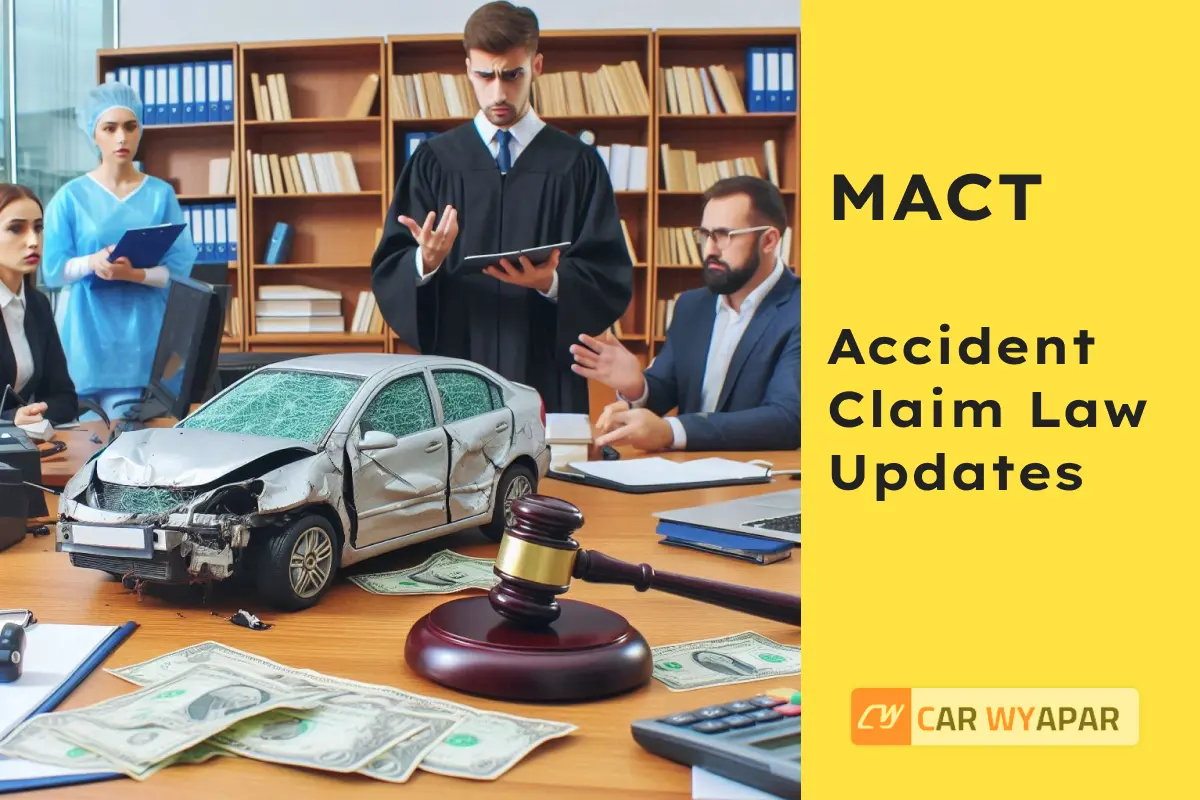Motor Accident Claims Tribunal – Updated Guidelines for 2025
Published On 21/2/2025, 11:57:14 am Author Adv Masoom RazaIn the last one year, several changes in laws have been made to empower citizens who are victims of motor accidents. Let’s understand these updates and how they impact compensation claims.

Imagine your car meets with an accident on a rainy day. You are shaken and worry about how you will get help. In such a situation, you would expect your insurance to support you. But what if, due to a strict legal rule, your claim is rejected and you cannot ask for help again? This is the problem many victims have faced.
From 2024- Feb 2025, Supreme Court of India has introduced a lot of changes in Motor Vehicle Acts that are favouring Motor Accident Claims in India in the favor of accident victims.
On February 13, 2025, the Supreme Court sent the case of Deepal Girishbhai Soni and others versus United India Insurance Co. Ltd. to a larger bench. In this case, the court looked at a 2004 judgment that had a major impact on accident claims. According to that judgment, if your application under Section 166 of the Motor Vehicles Act was dismissed, you were not allowed to file a new claim under Section 163A.
So, what does Section 163A mean? This section was created to give accident victims a second chance. Even if your first claim under Section 166 did not work, Section 163A lets you ask for compensation again. It is meant to support people who face extra difficulties because of a small error or a technical mistake in the first claim. In simple words, Section 163A acts as a safety net for those who might have lost hope after an initial setback.
Reconsidering Compensation Rules
The judiciary has consistently maintained that motor accident claims should be adjudicated based on the "preponderance of probability" rather than the stringent "beyond reasonable doubt" standard typical in criminal cases. This nuanced approach acknowledges the challenges victims often face in procuring exhaustive evidence. By lowering the evidentiary threshold, the courts facilitate a more accessible path for victims to obtain justice.
Accident Claim for Minors: What's New
In cases involving minors, the courts have demonstrated heightened sensitivity. A notable judgment saw the Supreme Court enhancing compensation to ₹50.8 lakhs for a young girl who, at seven years old, suffered severe mental and physical disabilities due to a motor accident.
This ruling reflects the judiciary's commitment to securing the future welfare of child victims, acknowledging the long-term impact of such traumatic incidents.
More Power to MACT
Every state has its own guidelines regarding compensations. when a case goes to the MACT or the High Court, judges do not have to follow these guidelines exactly. They can look at the specific details of each case and decide what is fair.
Consider a man named Raj who has an accident. The guidelines may suggest a standard way to calculate his compensation. But Raj's case has unique facts—perhaps his injuries are more severe or different from what is usually expected. When his case is heard in the MACT or the High Court, the judge can review all the evidence like medical reports and witness accounts. This way, the judge can give a decision that fits Raj’s special situation, even if it does not follow the usual insurance claim guidelines.
Income Tax Retun is manadatory for fair compensation
Imagine you have been in an accident and need to claim compensation in a tribunal. In the past, you might have been allowed to use various documents like salary slips, bank statements, or even verbal statements to prove your income. Now, courts require your Income Tax Returns (ITRs) as the main evidence of your income.
This change affects the claim process in several ways. First, ITRs are official and verified by tax authorities. This means the tribunal can quickly and accurately check your true earnings, which speeds up the decision-making process. It also makes the process fairer because everyone is judged by the same reliable document.
Under regular guidelines, different types of evidence could be used, which sometimes led to different outcomes in similar cases. With ITRs as the key evidence, there is less chance of disputes over what your actual income is. However, if someone has not filed their ITRs properly, this new rule might work against them, as other forms of evidence may no longer be accepted.
















